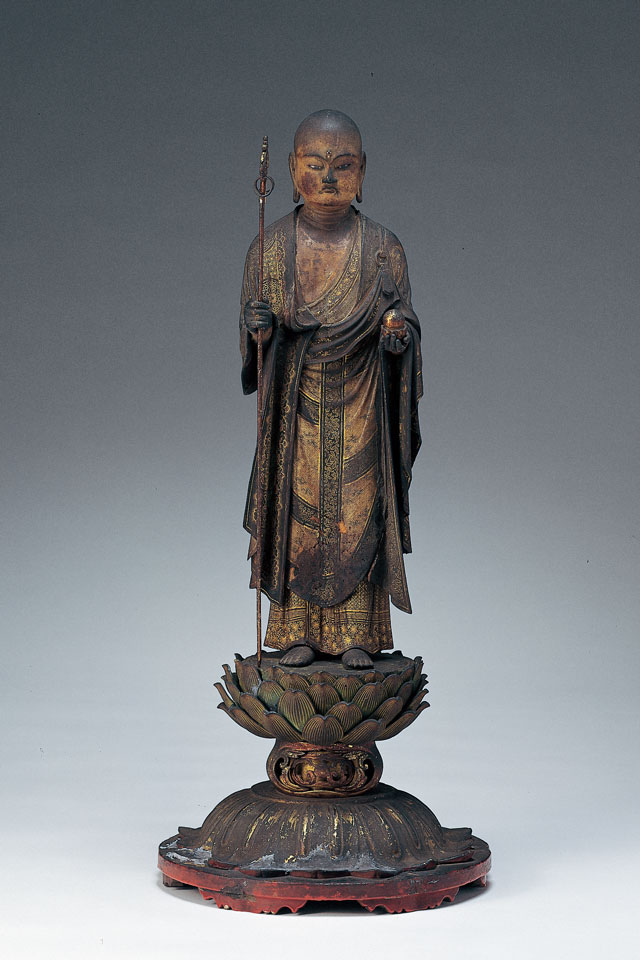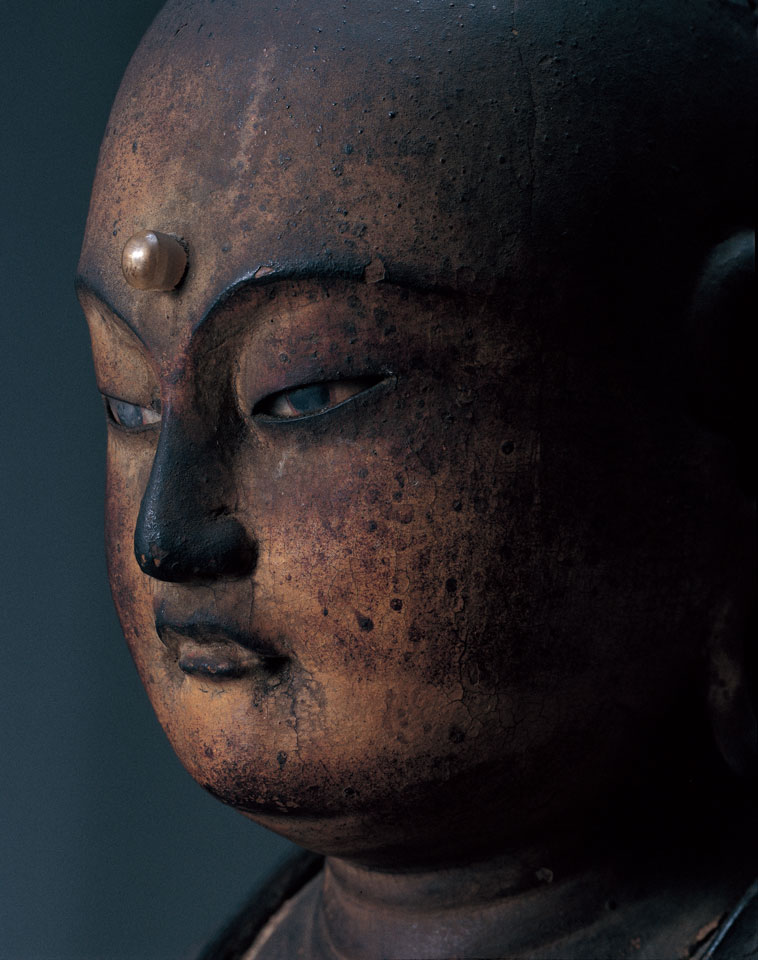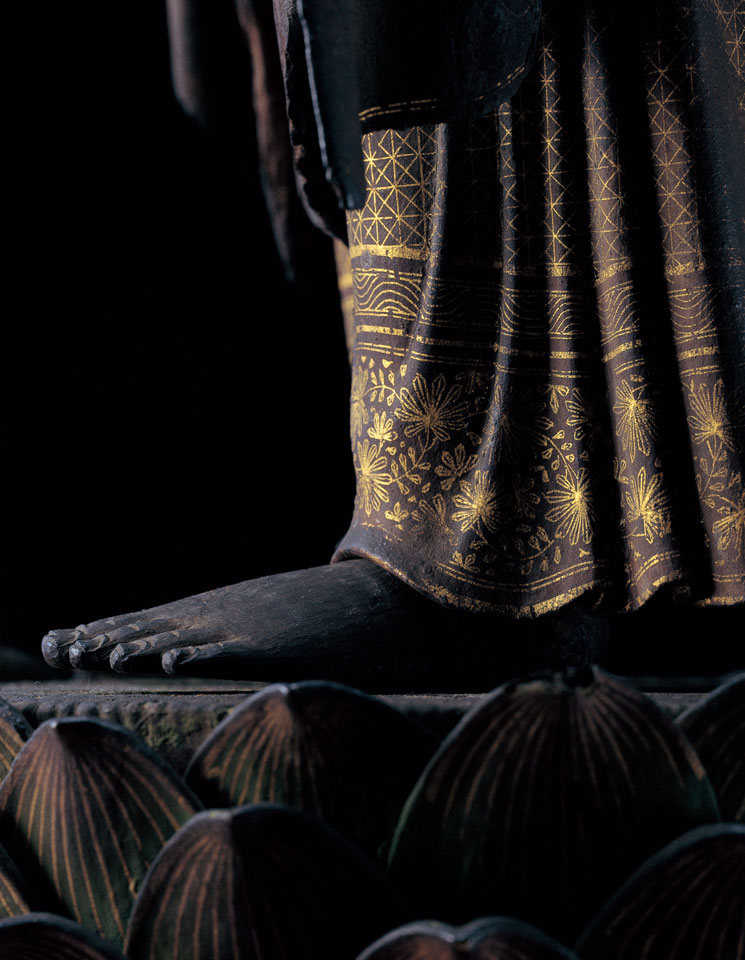Standing Jizō Bosatsu
- Kamakura period, 13th century
- Wood with pigments, crystal eyes, kirikane cut
- Overall height 73.5 cm, figure height 52.5 cm,
- Important Cultural Property
Jizō (Ksitigarbha) acts to save people during the long era that extends between the death of Shaka (Shakyamuni) and the coming of Miroku (Maitreya). As a result, this deity is a bosatsu
(bodhisattva), and yet wears the shaved head of a monk. Many images of this deity from the Heian and later periods show him holding a staff in his right hand. The staff expresses the belief that this deity does not reside in the Pure Land, but rather remains active in this world.
The present image holds a jewel in the left hand and a staff in the right hand, forming the standard iconography of this deity, and is also placed in the one-foot-slightly-forward pose to indicate walking in the present world.
This image is made of hinoki ( Japanese cypress) carved by the yosegi-zukuri technique. Crystal has beenset into the carved eye areas to form crystal eyeballs. The rich patterning that adorns the drapery is particularly noteworthy. Cut gold leaf (in which gold leaf is cut into thin strips) is used to form linked-vajra patterns, linked-hemp leaf patterns, linked-swastika patterns, karakusa floral motifs, and other decorative forms. The polychrome patterns that appear between these linked chains were outlined in gold paint.
The taut-cheeked face is dominated by the sharp gaze of the long eyes, forming an intent expression. The lavish patterning of the clothing motifs gives the image a sense of realism appropriate to his role as a savior in the real world. Both the image itself and the drapery patterns are typical examples of the styles prevalent during the second half of the Kamakura period.
In 2015, when the image underwent repairs and restoration, artifacts were unexpectedly found inside the image. Inside the head three shari “relics” consisting of what are believed to be lotus seeds were contained in a vessel wrapped in a cotton bag. The body also contained woodblock prints of Jizō Bosatsu, and one of them is inscribed with the year and the commissioner of the image, showing the names of the priest Chōgen, restorer of Tōdaiji temple and the sculptor Kaikei.


